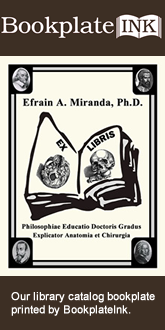This article is part of the series "A Moment in History" where we honor those who have contributed to the growth of medical knowledge in the areas of anatomy, medicine, surgery, and medical research.
Anton Nuck (1650-1692), a Dutch surgeon and anatomist used several forms for his name such as Antonio Nuck, Anton Nuck, Antonii Nuck, and Antonius Nuck van Leyden. Born in Harderwijk, Netherlands, he moved to Leyden in South Holland, where he studied medicine at the University of Leyden. He received his doctorate in February 1677 with this thesis “De Diabete”.
In 1683 he became a reader (lecturer) of anatomy and surgery at the Collegium Anatomicum Chirurgicum, in Haag (The Hague, Netherlands). He returned to his alma mater in Leyden, where the was appointed to the chair of Medicine and Surgery.
Nuck is known today for the first description of the processus vaginalis, a peritoneal evagination thar runs lateral to the gubernaculum into the inguinal canal in the fetus, both male and female, terminating in the labioscrotal fold, an area that will become the scrotum in the male or the labium majus in the female. This canal is known eponimycally today as the "Canal of Nuck"
The processus vaginalis in the male runs lateral to the vas deferens into the scrotum. The processus vaginalis in normally closed, but if it stays patent, it becomes a passageway for abdominal contents into the scrotum, setting the stage for an indirect inguinal hernia.
In the female the processus vaginalis runs lateral to the round ligament of the uterus. Since the round ligament ends in the labium majus, a patent processus vaginalis sets the stage for an indirect inguinal hernia that bulges into the labium majus (see figure 4 in Source 1- WARNING the image depicts external female genitalia)
Before Nuck, it was argued that females could not have inguinal hernias. In 1691 Nuck published his book "Adenographia Curiosa & Uteri Foeminei Anatome Nova", where he showed that indeed some females could indeed have hernias. For additional information on the canal of Nuck and the text in the book, click here.
Chapter 10 of this book is entitled “De Peritoneai Diverticulis Novis” (On a New Peritoneal Diverticulum”. Not only Nuck described the processus vaginalis, but he described a pathology today known as “Nuck’s cyst” or “Nuck’s hydrocele”, a cyst within Nucks’ canal. The images above show the title page of his book "Adenographia Curiosa & uteri foeminei anatome nova" and a composite image of plate XL and text. This book was dedicated to the mainly to the topic of lymphatic vessels. The discovery of a patent processus vaginalis was not its intent, but when he found it, he added it to his book. The text on image XL reads "diverticulum novum oculis subjiciens, ex subjecto humano" that can be freely translated as "On a new opening, seen with our eyes in a human subject"
Because of laparoscopic and robotic surgery that requires a pneumoperitoneum, an undiagnosed patent canal of Nuck can lead to a pneumatocele or pneumolabium (See Sources 6)
Besides general surgery, Anton Nuck practiced dentistry and ophthalmic surgery, being the first one to perform a paracentesis for hydrophthalmia (glaucoma) to reduce the pressure inside the eye. He also performed the first recorded vitrectomy. He studied the salivary glands and called the process sialography.
Sources:
1. “Quiste del Conducto de Nuck: una Patología Vulvar Poco Frecuente” Nuñez, JT; Virla, Ln, Delgado del Fox, MD; Gonzalez, A. Rev Obstet Ginecol Venez v.66 n.1 Caracas mar. 2006
2. “Revisiting the clinico-radiological features of an unusual inguino-labial swelling in an adult female” Vinoth, T; Lalchandani, A; Bharadwaj, S; Pandya, B. 2022. International Journal of Surgery Case Reports, 98(Complete)
3. “Early Descriptions of Vitreous Surgery” Grzybowski, A. & Kanclerz, P. (2021) Retina, 41 (7), 1364-1372.
4. The Origin of Medical Terms" Skinner 1970
5. "The cyst of the canal of Nuck: a great mimicker of groin hernia in female" Ben Ismail, I., Sghaier, M., Rebii, S., Zeznaidi, H. and Zoghlami, A. (2024) ANZ Journal of Surgery
6. "Unilateral Vulvar Pneumatocele (Pneumolabium) Diagnosed during Robotic Hysterectomy" Zoorob, D; Spalsbury, M;Slutz, T; et al. (2019) Case Reports in Obstetrics and Gynecology, 2019, 8106451
7. "A Family of Early English Oculists (1600-1751), With a Reappraisal of John Thomas Woolhouse"Leffler CT, Schwartz SG. (2017) Ophthalmol Eye Dis.
Anton Nuck's portrait in the public domain, courtesy of the Universiteit Leiden Digital Collections.
Images from "Adenographia Curiosa", public domain, courtesy of Archive.org.






